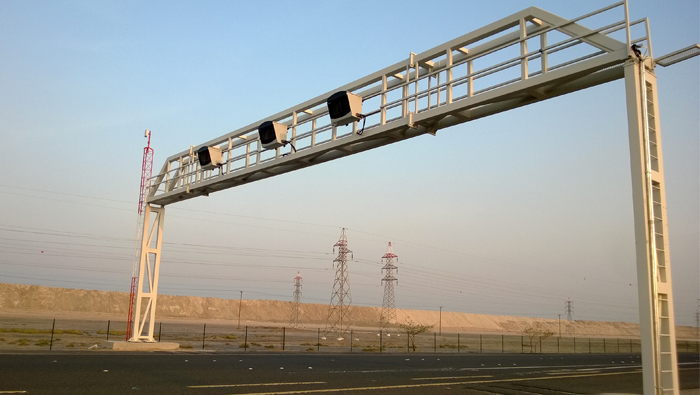
Muscat: Speed cameras that can track the average speed of drivers, putting an end to braking to avoid being flashed, are being actively considered by the Royal Oman Police (ROP).
Get your essential daily briefing delivered direct to your email inbox with our e-newsletter
The point-to-point radars, also known as ‘Average Speed Cameras’, have the ability to measure the time taken for a vehicle to travel from one radar to the next. They are programmed to capture a picture of the vehicle if it reaches the second radar faster than the average expected for the speed limit.
Speaking exclusively to Times of Oman, Captain Muthir Al Mazroui from the Directorate General of Traffic said, “As a technology, it is available already and could be used. Our system could implement these radars. It is only a matter of making a decision and beginning the process.”
“This is one of the plans that we want to implement, by God’s will, but I can’t say when,” said Cpt. Al Mazroui reiterating that “there is a plan”.
He said it will help in enhancing safety on Oman roads and prevent drivers from speeding.
“It is a very subtle and excellent system. It could, at least, regulate the speed between two radars. As you can see a lot of people drive at high speeds and rapidly reduce their speeds when they are approaching a radar, and speed up after passing it,” said Cpt. Al Mazroui.
However, he added that “people could bypass the system by taking the service roads before the first radar, speed up, and enter the main highway after the second radar.”
The solution to this is to place the radars before the highway exits and after the entrances to ensure nobody can fool the speed traps.
“As you know our highways have a lot of exits to service roads. Other countries use these radars on roads that do not have exits,” explained Cpt. Al Mazroui adding that Quriyat –Sur road is one of the ideal roads to use the speed traps.
Hilal Al Noumani, Service Manager for Waleed Associates LLC., who introduced the Point-to-Point, explained how the camera will work.
“One camera can monitor two lanes, but placing one camera for each lane is recommended. The first camera would snap a photo of the car and licence plate then as the car approaches the second camera it would snap another photo of the same car and calculate the time taken to travel between the two radars,” said Al Noumani.
“If the car has reached the second radar faster than the time it was supposed to, the radar will register it as a speed violation,” he added.
In the Gulf Cooperation Council, only Kuwait uses these radars.
CEO of Safety First, Daryl Hardy says that he welcomes the new system as they will support anything to make Oman roads safer.
“At Safety first we believe in promoting safety on the roads and so we support any such new radars which the ROP brings in,” said Hardy.
“If you hit people in the pocket, it really affects them and brings results. It’s unfortunate, however they need to understand that the action needs to come from them because it’s about their safety and the safety of everyone else on the road. However because they realize that they can’t afford all those speeding tickets, it creates an impact. So yes we support new radars which will bring down the accidents hopefully,” he added.